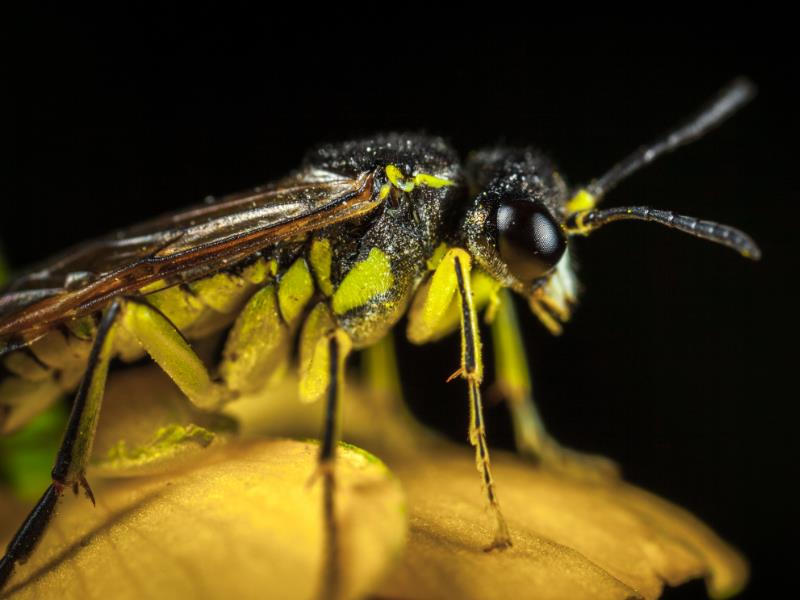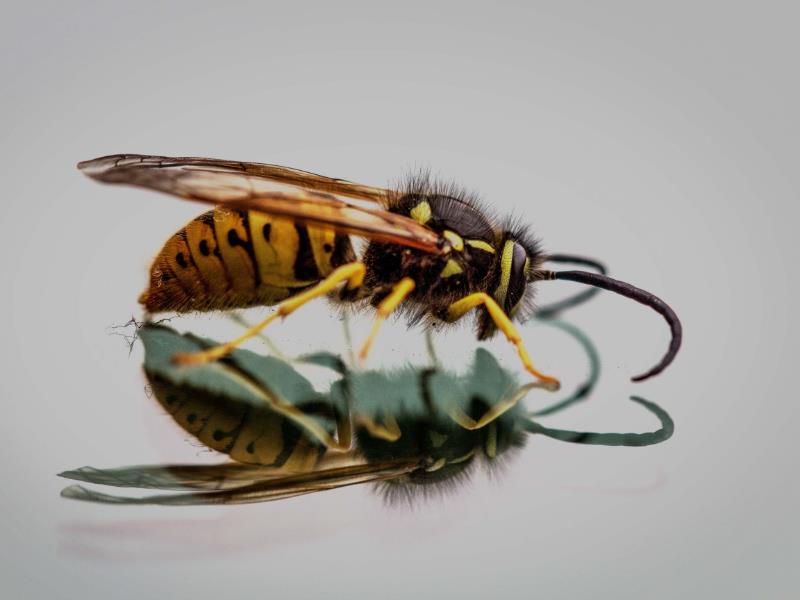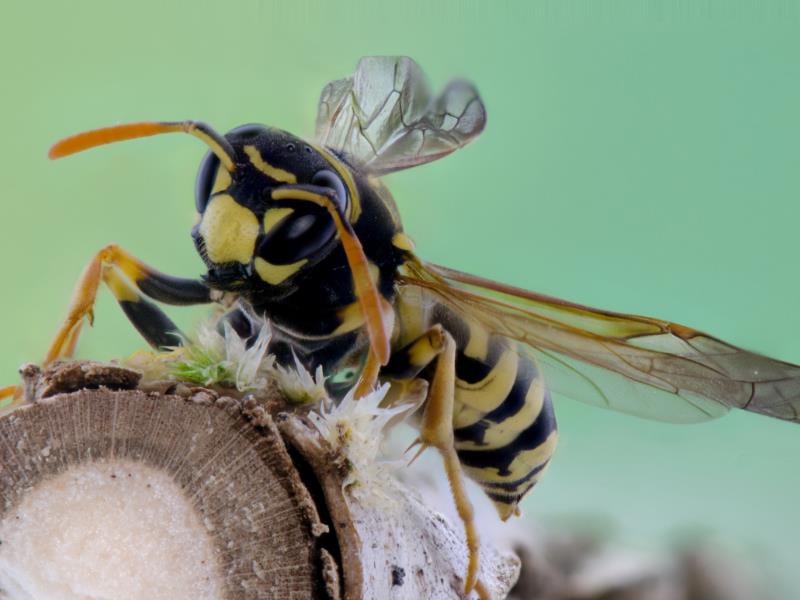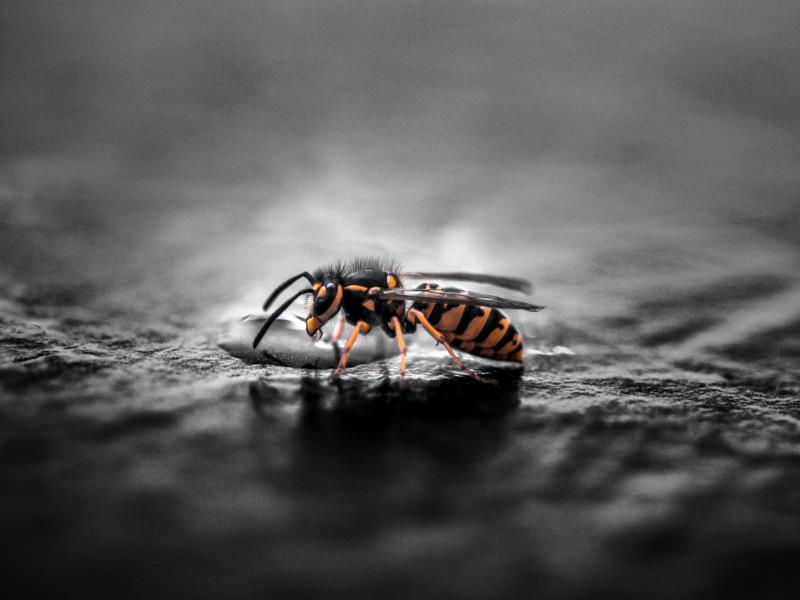What Is A Wasp?
Wasps are a small, flying insect of the order Hymenoptera, which is the same order as bees, ants, and sawflies (though sawflies are technically within their own suborder, the Symphyta). In Australia alone, there could be as many as 44,000 distinct species of insects in this order, with the majority of those species being varieties of bees and wasps, making them both incredibly biodiverse.

A Brisbane wasp prepares for flight
What Do They Look Like?
Technically speaking, a wasp is any member of the Hymenoptera order that is not an ant or a bee and has a narrow waist, which is the primary distinguishing feature between wasps and sawflies. More practically, wasps can vary in size from small to moderately large, which means you can’t categorise them by size alone. Their body is wrapped within a solid exoskeleton and is split into three segments: their head, a mesosoma, and a metasoma. The mesosoma is primarily made up of the thorax but also includes the first segment of the abdomen, while the metasoma is the rest of the abdomen. The first and second segments of the abdomen are joined by the distinguishing waist, which is referred to as a petiole.
Upon their heads rest not only a pair of compound eyes but also a set of simple eyes, which are generally arranged in a triangle formation. There is a pair of mandibles that can be adapted for both biting and cutting, while the majority of their nutrient intake occurs via a suctorial proboscis. At the rear of the female wasp is an ovipositor, which can be modified to allow sawing and stinging, as well as the delivery of venom.
Finally, most wasps have two pairs of wings. These wings are made of membrane, and the forewings are typically much larger than the hind pair. However, not every wasp will have wings, with certain species featuring flightless female wasps.

A mirror reflection of this Brisbane wasp stares back at it
When Are They Most Active?
Wasps will tend to either find shelter or die during the winter months, so their activity begins once spring does. However, while female social wasps will begin to construct a nest while the weather cools down, adult male social wasps and both female and male solitary wasps will continue to be active in the colder months, assuming the male solitary wasps survived the mating process, so you should never assume that the weather is too cold to find a wasp.
How Do They Form New Nests?
The process of nest-building between the social and solitary wasps varies, but generally involves starting the reproduction cycle. Female social wasps will bury themselves in the ground to pass the winter, while the males are left to be killed by the harsh conditions. The eggs begin to hatch and larvae begin to develop into adult workers, who all start working with the queen to develop the colony. Some of the females born during this process will be born infertile and only exist to help their first colony, while others will retain their fertility to start additional colonies. By the end of the process, it is the end of summer, and any unfertilised eggs develop into male wasps. In autumn, the remaining wasps reproduce, and new colonies are built.

An image of a Brisbane wasp searching for food
By comparison, solitary wasps, as the name suggests, are not interested in developing large colonies. The females are always fertile and will lay their eggs near insects they have paralysed so that the larvae can feed off of them. These wasps will mate in spring, and while the males may die shortly thereafter, some can be known to survive past the summer. However, come winter, most of the adult solitary wasps will be dead, with the majority of their species now made up of infants in the pupal stage, the last stage of their development.
What Risk Do They Pose?
Wasps may be common pests, but that doesn’t mean they are a particularly notable threat. They’ll commonly begin to sting humans in the summer and autumn months, while both the social colonies and solitary wasps are active, though these stings are rarely fatal on their own, presenting as more of a nuisance in the vast majority of cases. However, there are species of wasps that can inject vast amounts of painful venom, such as the Tarantula Hawk (which, thankfully, isn’t commonly found in Australia), and it is also possible to suffer an anaphylactic response to a wasp’s venom, which can quickly become deadly if not properly treated.
Is There Anywhere In Particular They’re A Bigger Threat?
Generally speaking, the only times a wasp will attack a human will be in defence of their nest, so you shouldn’t need to worry about a wasp unless you’ve stumbled upon their home. Unfortunately, that does mean if you find yourself with a wasp nest hanging from your garage door or plastered somewhere on your back patio, you’re probably going to want to get that removed before someone gets hurt.











